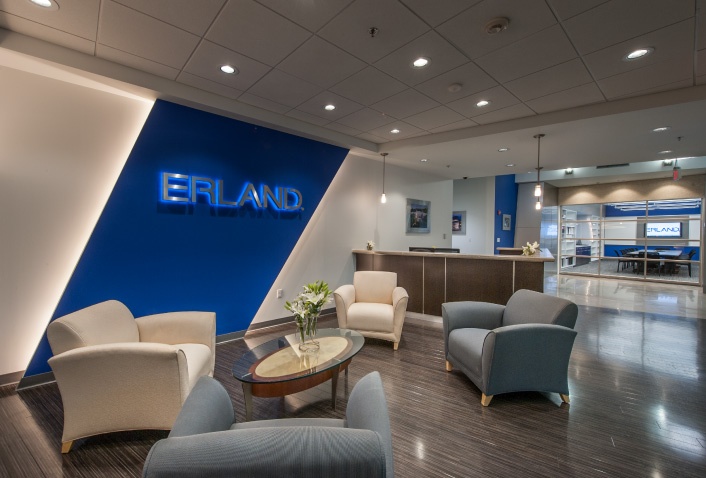Retailers have known it for decades: incorporating the brand into interior design has a powerful marketing impact. Starbucks, McDonalds, Target and Apple are examples of retailers that have perfected the art of creating atmosphere that's unmistakably their own.
But branding indoor spaces has become important to companies outside the retail realm, too. Central Massachusetts designers, marketers and business owners say it's no longer enough to slap a logo on your product and website. The company identity has to be a part of the spaces where the work is being done each day, too.
"Nobody really wants an office space that people don't recognize as being some place special," said Brent Maugel, president and owner of Harvard-based Maugel Architects.
Maugel works regularly with firms that want to spruce up the interiors of offices that were last refinished in a bygone area. Today, businesses want to trade square footage for collaborative spaces, and find design elements — from paint colors to lighting and greenery — that are anything but ordinary.
"The culture of the company can be expressed by the uniqueness of the work environment," Maugel said.
That's not to say that companies are only concerned about branding when they refurbish workspaces today. The hottest elements in interior office design, according to Maugel and others who work in the industry, have just as much to do with practicality and the way business is done today.
Maugel said professional offices in the past have featured several conference rooms large enough to accommodate eight to 10 people at a time. But businesses are now more interested in designing open conversation areas that feel more like a living room.
This is fueled by the desire to reduce square-footage (something many companies are trying to do, post-recession) as well as technology, according to Maugel. Today, people frequently huddle around a laptop during meetings rather than gaze up at an overhead projector.
Companies also try to send an appealing message to employees through interior design elements. To create an environment of transparency, cubicles are built lower and drywall is often knocked down to make way for glass, Maugel said. Large windows and skylights are chosen to maximize natural light — something that makes employees happier. Hip paint colors and the elimination of dropped ceilings are intended to attract fresh talent, too.
Click to continue reading full article on WBJ website

